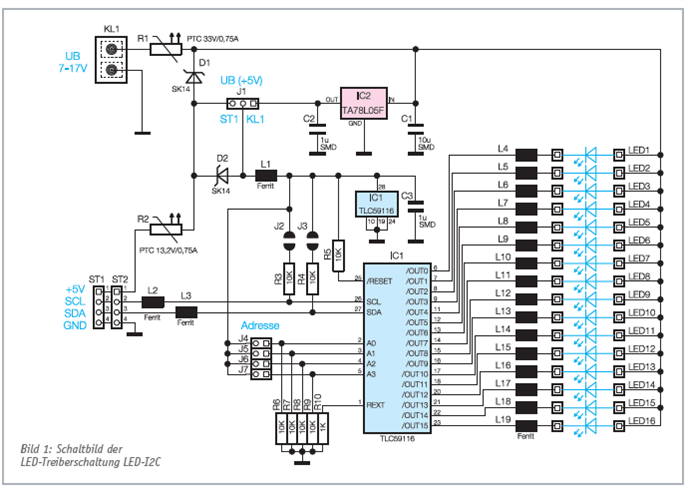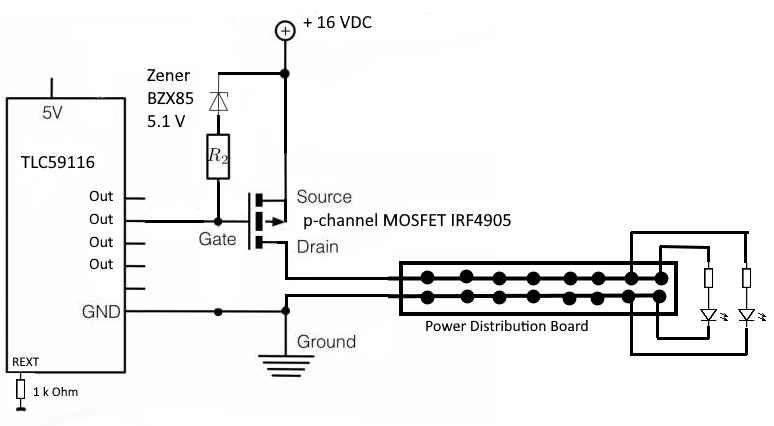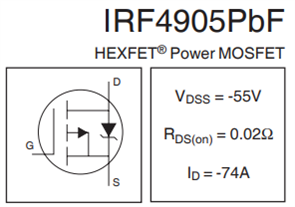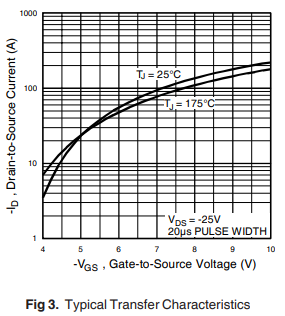Dear TI team,
I am a SW developer, so unfortunately I'm not an expert in hardware and I hope that you can help me. I control some TLC59116 with LEDs on the outputs with an Arduino UNO. In addition, some outputs on a TLC should be used to drive MOSFET's.
Specifically: I would like to use some outputs of the TLC59116IPWR to control each an N-channel Mosfets IRLZ44. The TLC is installed on a board that I bought, I use the ELV I2C bus LED driver order no .: 098377. ELV supplies the TLC on this board with 5 VDC. The load on each Mosfet is a power distribution board with a 16 VDC supply to which some LEDs are connected on it. The LED's are with built-in series resistors for operation at 16 VDC (model lighting).
The task of the TLC59116 is to control the gate of the mosfet with the PWM output and thus to reduce the supply voltage of the distributor board so that the brightness of the LEDs connected there can be reduced depending on the PWM value. Individual control of the LEDs is not required in this case, hence this circuit principle with the distributor board.
I would like to switch the IRLZ44 to the outputs of the TLC59116 according to Figure 3 below
http://www.mintgruen.tu-berlin.de/robotikWiki/doku.php?id=techniken:schalten
The difference between the figure 3 and my usecase is, that I want to use not the Arduino Output but an TLC59116 output to control the Mosfet Gate. I tried to make a drawing:

I would have used it now
- R1 (protective resistor between TLC output and IRLZ44 gate) with 180 ohms (I have seen the 180 Ohm in some samples)
- R2 (pulldown at the gate) with 10 kOhm (also seen in some samples)
According to ELV documents for the TLC59116 board, REXT on the TLC59116 is wired with 1 kOhm, so the output current at the outputs of the TLC is 20 mA according to the data sheet of the TLC59116.
My questions:
# is the gate resistance correct to protect the gate, or does it have to be omitted for operation on the TLC59116 outputs?
# Is the dimensioning of the two resistors correct for operation on the TLC?
# Do I need an additional pull-up resistor on the gate?
If so, why, what value and at what potential (to the TLC supply or the 16 VDC load supply). Reason for asking: In the discussion below Pullups are used, but unfortunately I don't understand the necessity:
# In your opinion, does something speak against the use of the IRLZ44 at the TLC59116? This was chosen because it has a very low Rdson and can therefore be used for my load case up to 1 A without a heat sink. In addition, it switches through cleanly at 5 VDC.
In addition here is the schematics of the TLC-Board of the ELV company I use

I apologize for my modest knowledge of electronics and also my imperfect English and hope you can help me.
Thank you in advance for your feedback!
Sincerely
Andreas Hiemer




